The Strzelecki Project
B Fry
This article is getting a makeover
One of the most significant reforestation projects, the South Gippsland Reforestation Project, centred on the eastern portion of the Strzelecki Ranges, which had been opened up to settlement in the 1880s, and later for Soldier Settlement following World War I. This is well described by WS Noble in "A New Future for the heartbreak Hills".
Background
Some Quotes from WS Noble
WS Noble provides a lot of detail on what sort of conditions new settlers experienced in the Strzeleckis. The selected quotes below will help provide some understanding of the circumstances they faced.
“By 1887 the Minister for Lands (Mr. Dow) was expressing regret that "the magnificent blue gum ridges throughout south Gippsland have been alienated from the Crown …… every acre of this land has passed into the hands of private selectors."
“The prospect that faced the settlers was an almost terrifying one. Huge trees, 90 metres and more high and with a diameter of two to three metres, covered the hills. Beneath them grew a dense jungle of smaller species - hazel, musk, waffle and others - combined with swordgrass and wiregrass, while in the mountain gullies tree ferns reached a height of 12 metres.”
“Clearing of this vast growth was a formidable task which cost the settlers years of back-breaking work. The original selections were limited to 130 hectares but some held less. Even to clear 40 hectares with axe and saw and shovel - and fire - was an herculean undertaking.”
“The method they followed as they gained experience was to partly cut through the trees as they worked their way uphill and then at the top of the slope fell one large tree, which by its weight brought down the trees below in a giant, accelerating collapse. This left a tangled, compacted mass of scrub, undergrowth and fallen timber, which was left to dry, until on a suitably hot day in January or February it was set alight.”
“It took two generations of back-breaking toil, self-denial and often real privation to break-in the Strzeleckis. Those who did it were not to know that eventually the country would win, and that what they had achieved would in the long run largely be lost.”
“In the meantime the settlers faced other trials and real dangers as fires swept across the country. The worst occurred in 1898. Hundreds of settlers were burnt out, and the loss of stock and property was described as "enormous". An early count showed 50 homesteads destroyed.”
"Next morning what a change met our eyes! Instead of the forest of dry trees, there were great, clear spaces. The forest had largely disappeared, and through the murky atmosphere one could see the homesteads of neighbours half a mile away that we had never been able to see before, and then the smoking ruins of what one had been pleased to call a farm, now swept of grass and fencing.”
“As the understanding grew among the people that the clearing of the Strzeleckis for farm land had been a tragic mistake, a slow blight settled over the ranges. Farmers sold their land and moved away. Others walked off, leaving behind vacant properties and abandoned homes. The bracken and scrub grew thicker.”
“A State Development Committee report many years ago said: "This area, which once carried some of the finest white mountain ash forests of the State presents a challenge to man to restore its former beauty and productivity, which he so eagerly destroyed. It is a tragedy that so much effort was put into the destruction of these forests, only to find that the majority of it was unsuitable for the purpose for which it was cleared."
“The very conditions that made it impossible for the settlers to carry on also made it more difficult to reforest the land. The scrub, the bracken and blackberries, the rabbits that attacked anything edible, created problems that had to be overcome before plantations could be successfully established.”
The Program
High rainfall, steep hills, the lack of an adequate road system and long distances to markets, caused farming in these areas to fail. The FCV began purchasing properties in the early 1930s, and increasingly through the 1940s and into the 1950s, reaching a peak between 1944 and 1951. At the same time, Australian Paper Manufacturers (APM), which had established a paper mill near Morwell, began purchasing properties to establish plantations that would eventually supply the mill.
The FCV and APM Forests competed in the property market for some time, but it was eventually agreed that APM Forests would purchase properties to the east of Livingstone Rd and south to the Grand Ridge Rd, and that the FCV would buy properties to the west of Livingstone Rd and south of the Grand Ridge Road. This arrangement, and the purchasing of properties, continued into the late 1970s.
By 1974 the FCV had purchsed over 300 properties with a total area of 22,300ha, and a map of the plantations as they existed in 1974 (from WS Noble, 1974) is available here.
Records in the Mirboo Forest Office reveal that one property on Radburns Rd was bought from a World War II returned serviceman for as little as £5 (the equivalent of about $0.14/ha in today's terms) on the condition that the FCV pay off money owed to the Vermin & Noxious Weeds Board.
A nursery was established at the FCV camp at Olsens Bridge, at the head of the Morwell River, to grow Mountain Ash (Eucalyptus regnans) seedlings. An important player during this phase was John Heislers, who migrated from Latvia after World War II. John had graduated from Riga University's forest science course in 1940.
The nursery and camp were later to become the Morwell River Prison Camp, where inmates operated the nursery under the guidance of FCV employees. In the mid-1970s the nursery was producing in excess of one million seedlings each year.
The steep terrain and large size of some of the wattle regrowth on the purchased properties meant that large (Caterpillar D7 equivalent) bulldozers were required to clear most of the land for planting, but some of the lighter scrub areas were cleared using hand tools (axes, slashers etc) by inmates from the Prison Camp, with crews of up to 40 people at a time.
Because of the climate, this clearing work was concentrated on the steeper country during summer months, and the easier country during winter. Planting was carried out by hand using tubed E. regnans stock, with up to 400 ha/yr planted in the Mirboo Forest District during the early 1970s. P. radiata was also planted on the easier country in the District (up to 350 ha/yr). Planting was also undertaken in the Yarram Forest District. The P. radiata seedlings were raised in FCV nurseries at Creswick, Trentham and a new nursey at the Won Wron Prison Camp near Yarram.
APM Forests was also busy reforesting their purchased land using a similar approach, planting large areas to P. radiata in the Longford, Flynn Creek, Carrujung, Mt Tassie, Tyers and Stockdale areas. Much of this original planting work was successful, with large areas subsequently harvested and replanted. Significant areas of hardwood plantings on the steeper areas have been reserved for environmental purposes, particularly in the major gullies.
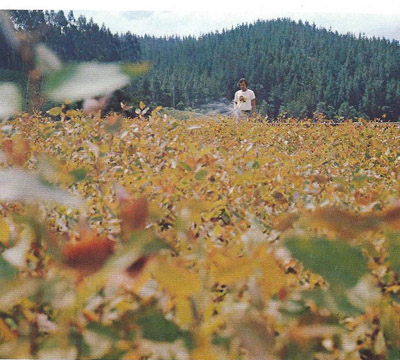
E. regnans seedlings being raised in the nursery and ready for planting
About 1974
Source: WS Noble
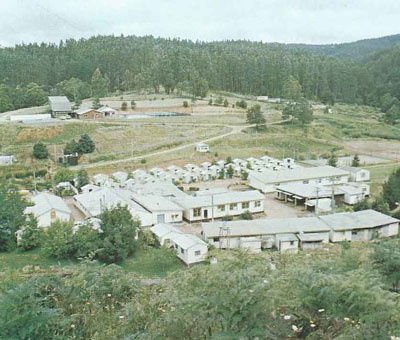
Morwell River Prison Camp with Olsen's Bridge Nursery in the background
About 1974
Source: WS Noble
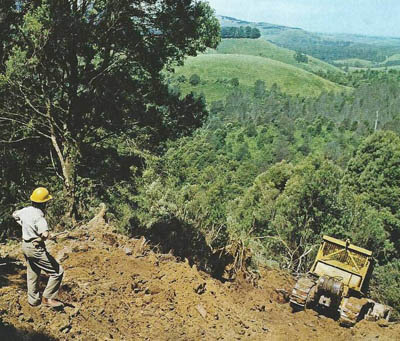
Clearing scrubland ready for planting with E. regnans seedlings
About 1974
Source: WS Noble
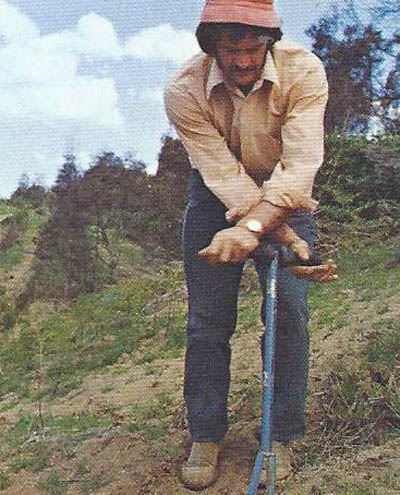
John Mercer planting tubed seedling using a John Heisler developed Pogo Stick planting device
About 1974
Source: WS Noble
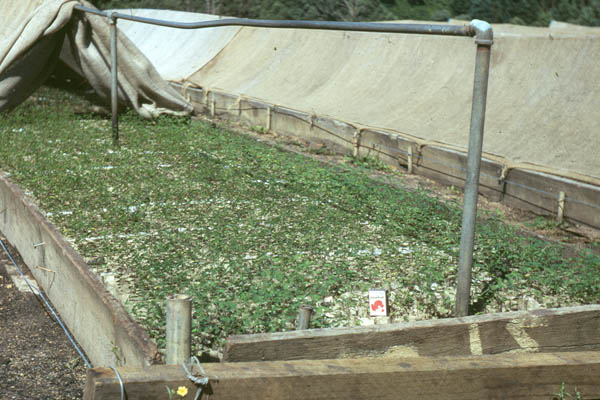
E. regnans seedlings at Olsens Bridge Nursery
1974
Photo: B Fry
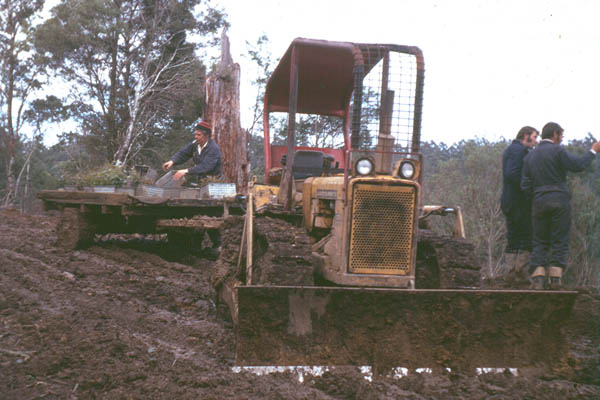
Planting works, Jacksons Track. Ted Roberts (l), Stew Evans (c), Gordon Wilkins (r)
1974
Photo: B Fry
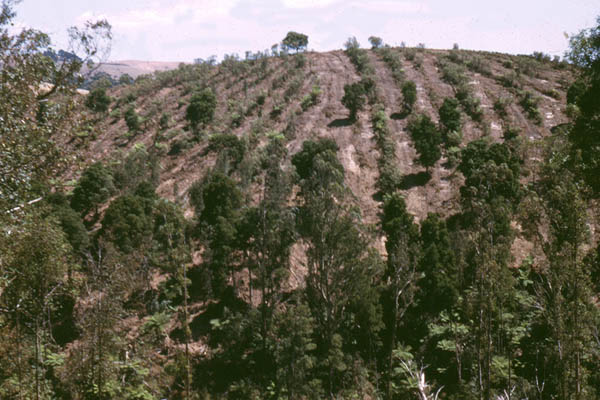
Scrub area at Boolarong ready for planting
1975
Photo: B Fry
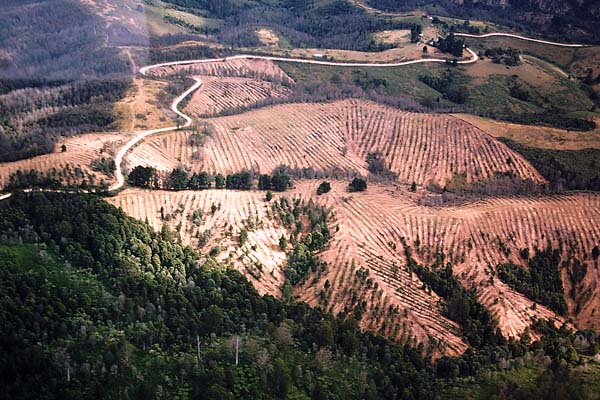
Areas reforested by strip clearing and planting
About 1972
Photo: N Cox
Before & After
Before & After
A photo gallery in here of what it looked like before and after reforestation.
A good map if possible.
A final area statement if possible.
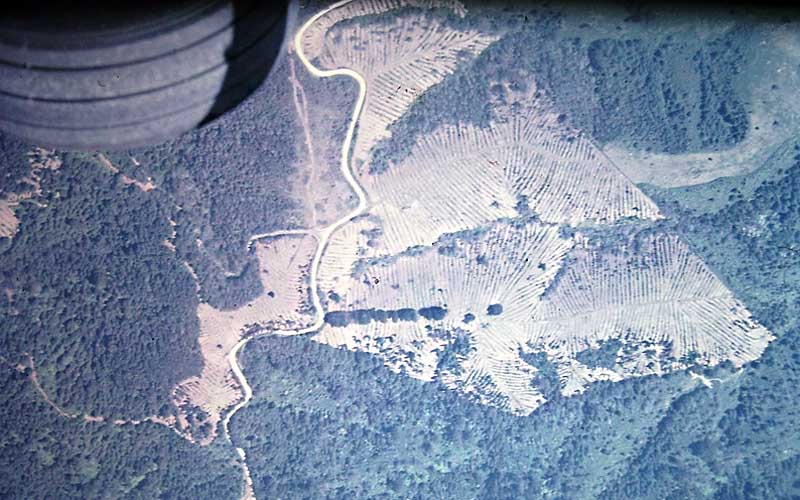
Aerial view of strip planting in the Strzelecki Ranges
About 1970
Photo: N Cox
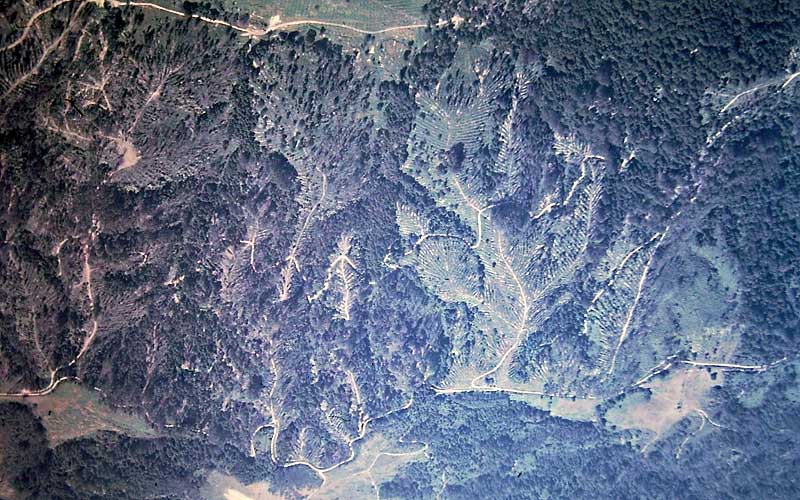
Aerial view of strip planting in the Strzelecki Ranges
About 1970
Photo: N Cox
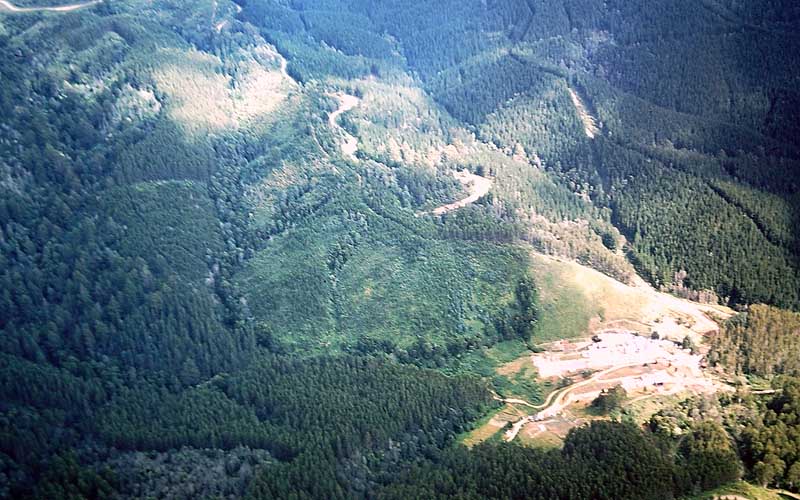
Morwell River Prison surrounded by reforested areas
About 1972
Photo: N Cox
